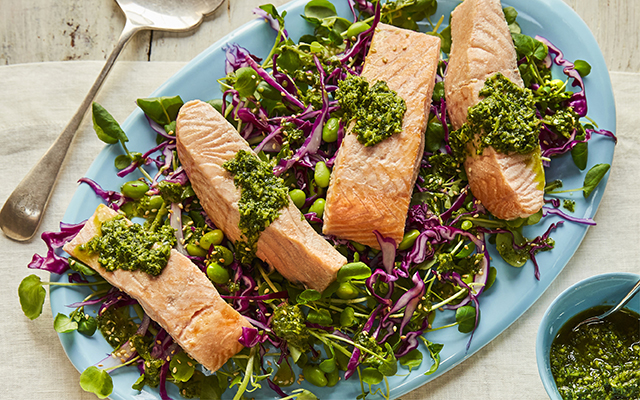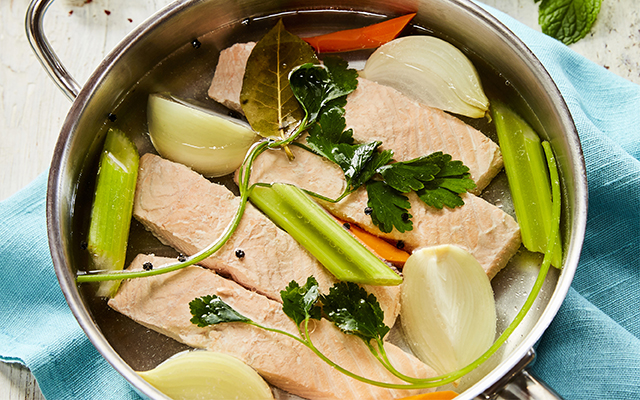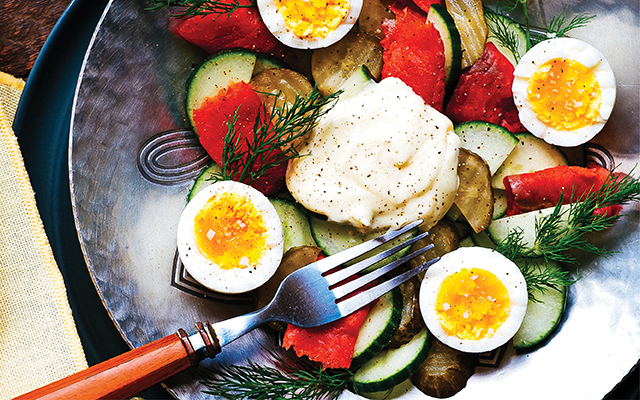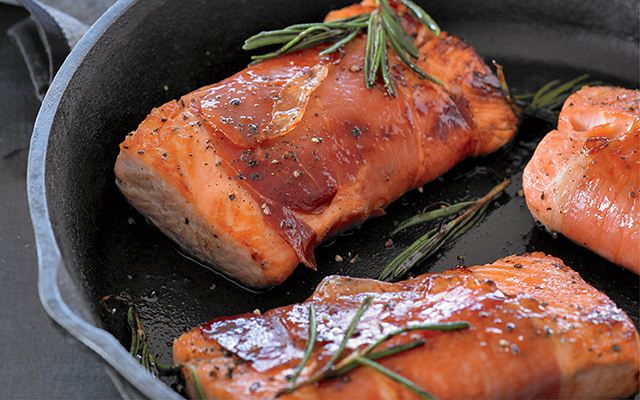Watercress-Edamame Salad With Poached Salmon and Asian Pesto
An Asian salad with a ginger-maple vinaigrette is topped with poached salmon and a zesty pesto.

Ingredients
Poached Salmon
- See “How to Poach Salmon“
Watercress Salad
- 1/2 cup cilantro leaves
- 1/2 cup extra-virgin olive oil
- 1 tsp. lime zest
- 3 tbs. freshly squeezed lime juice
- 1 tsp. grated gingerroot
- 1/2 tsp. maple syrup
- 1 cup frozen shelled edamame, thawed
- Freshly squeezed lemon juice
- Sea salt
- 2 cups tightly packed watercress
- 2 cups shredded purple cabbage
- 2 tsp. sesame seeds, toasted
Pesto
- 1 tbs. minced gingerroot
- 1 clove garlic, minced
- 3/4 cup tightly packed cilantro leaves
- 1/4 cup tightly packed mint leaves
- 1/4 cup tightly packed flat-leaf parsley
- 3 tbs. extra-virgin olive oil
- 1/4 tsp. sea salt
- 2 tbs. freshly squeezed lime juice
Directions
STEP 1
Salad Directions: First make a vinaigrette: Place cilantro, olive oil, lime zest, lime juice, gingerroot, and maple syrup into a small food processor and process about one minute, until smooth.
STEP 2
Rinse the edamame well and mix with a spritz of lemon juice and a pinch of sea salt. Combine with watercress and cabbage, and toss. Just before serving, dress with cilantro vinaigrette and top with sesame seeds.
STEP 3
Pesto Directions: Place all ingredients in a small food processor. Blend until smooth, about one minute. Spoon pesto onto the poached salmon fillets and serve.
Thoughts to share?
ADVERTISEMENT
More Like This
How to Poach Salmon
One of the tastiest ways to prepare salmon is also one of the easiest.
Smoked Salmon and Hard-Boiled Egg Salad
This protein-rich Icelandic breakfast will keep you energized all day.
Prosciutto Maple Salmon
Choose wild-caught salmon rather than farm-raised to avoid pesticides and pollutants.



